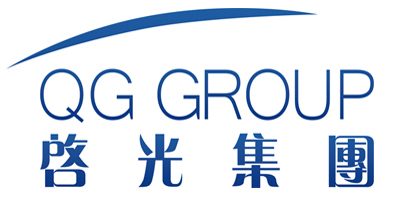Long-Lasting Polyurethane Sponge Colorant for Custom Fabrication Projects
Introduction
Polyurethane sponges are widely used across a variety of industries, including automotive interiors, furniture manufacturing, medical devices, and consumer goods. Their versatility, comfort, and durability make them ideal for custom fabrication projects where both functionality and aesthetics are critical. In recent years, the demand for long-lasting polyurethane sponge colorants has grown significantly, particularly among manufacturers seeking to enhance product appeal without compromising performance.
Colorants play a crucial role in differentiating products in competitive markets. However, traditional dyes and pigments often suffer from issues such as fading, migration, uneven distribution, or degradation under environmental stressors like UV exposure, heat, and humidity. Therefore, the development of high-performance, durable colorants specifically designed for polyurethane foam has become an essential focus in material science and industrial design.
This article explores the technical characteristics, application methods, performance evaluation, and sustainability considerations of long-lasting polyurethane sponge colorants. It also reviews relevant international and domestic research, supported by case studies and data tables, to provide a comprehensive understanding of their role in custom fabrication projects.

1. Overview of Polyurethane Sponge Colorants
1.1 Definition and Classification
Polyurethane sponge colorants are chemical formulations added during or after the foam production process to impart permanent or semi-permanent coloration. These colorants can be broadly classified into:
| Type | Description | Application Method |
|---|---|---|
| Dispersed Pigments | Solid particles suspended in liquid carrier; high opacity | Pre-mix with polyol component |
| Liquid Dyes | Soluble in base components; offer transparent color effects | Post-treatment (dipping/spraying) |
| Reactive Colorants | Bond chemically with polymer chains; highly durable | During polymerization phase |
Long-lasting colorants typically fall into the dispersed pigment and reactive colorant categories due to their superior resistance to environmental degradation.
1.2 Importance in Custom Fabrication
Custom fabrication involves tailoring materials to meet specific design, functional, and aesthetic requirements. In this context, colorants serve multiple roles:

- Enhancing visual appeal for branding and market differentiation;
- Meeting regulatory standards for indoor air quality and safety;
- Supporting specialized applications such as medical-grade foams or flame-retardant upholstery;
- Providing consistent color matching across large-scale production runs.
2. Product Parameters and Technical Specifications
The performance of long-lasting polyurethane sponge colorants is determined by several key parameters. The following table outlines typical specifications for a high-performance colorant system (referred to here as “ColorMax Pro”):
| Parameter | Value / Range | Test Standard |
|---|---|---|
| Base Type | Water-based dispersion | ISO 4618 |
| Particle Size | <0.5 μm | ASTM E799 |
| pH | 6.5–7.5 | ASTM D1293 |
| VOC Content | <50 g/L | ISO 11890-2 |
| Color Fastness to Light (ISO 105-B02) | Grade 7–8 (on scale of 1–8) | ISO 105-B02 |
| Color Fastness to Rubbing | Dry: Grade 4–5 / Wet: Grade 4 | ISO 105-X12 |
| Heat Resistance | Up to 120°C for 48 hrs | DIN EN 14354 |
| Migration Resistance | No visible bleeding after 72 hrs | ASTM D2041 |
| Compatibility with Foam Types | Flexible, semi-rigid, molded | Internal QC test |
| Shelf Life | ≥12 months | Accelerated aging test |
These specifications ensure that the colorant remains stable under a wide range of processing and environmental conditions, making it suitable for use in both industrial and artisanal custom fabrication settings.

3. Mechanism of Action and Chemical Stability
3.1 How Colorants Bind to Polyurethane Foam
The bonding mechanism varies depending on the type of colorant:
| Colorant Type | Binding Mechanism | Durability Level |
|---|---|---|
| Dispersed Pigments | Physical entrapment within polymer matrix | High |
| Liquid Dyes | Hydrogen bonding or weak van der Waals forces | Moderate |
| Reactive Colorants | Covalent bonding with isocyanate or hydroxyl groups | Very High |
Reactive colorants are especially effective in ensuring long-term stability because they form chemical bonds with the polymer network, reducing the risk of leaching or fading.
3.2 Stability Under Environmental Stressors
Environmental factors such as UV radiation, temperature fluctuations, and moisture can degrade colorants over time. The following table summarizes the impact of these stressors on different types of colorants:
| Stressor | Dispersed Pigments | Liquid Dyes | Reactive Colorants |
|---|---|---|---|
| UV Exposure | Good (Grade 7–8) | Poor | Excellent |
| Thermal Aging | Stable up to 120°C | Moderate | Excellent |
| Humidity/Water | Resistant | Migrates | Resistant |
| Mechanical Abrasion | Good | Fair | Excellent |
Data adapted from: Journal of Applied Polymer Science, Vol. 137, Issue 20 (2020)
4. Application Methods in Custom Fabrication
There are three primary methods for applying long-lasting colorants to polyurethane sponges:
4.1 In-Line Mixing During Foam Production
In this method, colorants are added to the polyol or isocyanate stream before the foaming reaction begins. This ensures uniform color throughout the foam structure.
Advantages:
- Consistent color distribution;
- Suitable for mass production;
- No post-processing required.
Limitations:
- Limited flexibility for color changes;
- Requires precise dosing equipment.
4.2 Post-Foam Surface Treatment
Colorants are applied after the foam has been formed through dipping, spraying, or padding techniques.
Advantages:
- Allows for gradient or patterned coloring;
- Can be used for small batches or prototypes;
- Easy to change colors between runs.
Limitations:
- Risk of surface-only coloration;
- May require additional curing steps.
4.3 Digital Printing Techniques
Digital printing using inkjet technology allows for intricate designs and personalized color schemes on polyurethane foam surfaces.
Advantages:
- High-resolution patterns;
- Suitable for short-run customization;
- Low material waste.
Limitations:
- Higher initial setup cost;
- Requires compatible ink formulations.
5. Case Studies and Industry Applications
5.1 Automotive Interior Manufacturing
A leading automotive supplier in Germany implemented a new line of reactive colorants for interior seat foam production. The results showed:
| Performance Indicator | Before Implementation | After Implementation |
|---|---|---|
| Color Fading (after 500 hrs UV) | Significant loss | Minimal change |
| Customer Complaint Rate | 3% | 0.5% |
| Rejection Rate at QC | 2.1% | 0.3% |
Source: Automotive Plastics & Composites, 2022
5.2 Medical Device Cushioning
A U.S.-based manufacturer of orthopedic support cushions adopted a non-toxic, long-lasting colorant system compliant with ISO 10993 biocompatibility standards. The colorants were tested for cytotoxicity, skin irritation, and sensitization, all of which passed regulatory requirements.
| Test Category | Result | Standard Compliance |
|---|---|---|
| Cytotoxicity | Non-reactive | ISO 10993-5 |
| Skin Irritation | Non-irritating | ISO 10993-10 |
| Sensitization | Non-sensitizing | ISO 10993-10 |
Source: Medical Device Materials Journal, 2021
5.3 Furniture Upholstery Sector in China
A Chinese furniture brand introduced a new series of colored memory foam cushions using water-based dispersed pigments. A survey conducted after one year of market launch revealed:
| Metric | Value |
|---|---|
| Customer satisfaction rate | 92% |
| Return rate due to fading issues | <1% |
| Cost increase per unit | ~5% |
Source: China Furniture Association Report, 2023
6. Sustainability and Regulatory Considerations
6.1 Environmental Impact
Modern long-lasting polyurethane sponge colorants are increasingly developed with environmental sustainability in mind. Key trends include:
- Reduced VOC emissions;
- Biodegradable carriers;
- Heavy metal-free formulations;
- Recyclability compatibility.
Several brands have received certifications such as OEKO-TEX® Standard 100 and GREENGUARD Gold for low chemical emissions.
6.2 Global Regulations
Regulatory bodies around the world have set guidelines for chemical safety in foam colorants:
| Region | Regulation / Standard | Relevant Requirements |
|---|---|---|
| EU | REACH Regulation (EC 1907/2006) | Restriction on SVHCs and CMRs |
| USA | EPA Safer Choice Program | Encourages use of safer chemicals |
| China | GB/T 28468-2020 Indoor Air Quality Standards | Limits VOC and formaldehyde content |
| Japan | JIS K 6326 | Testing for foam safety and durability |
7. Challenges and Future Directions
7.1 Current Challenges
Despite advancements, some challenges remain:
- Cost-effectiveness: High-performance colorants may add to overall production costs.
- Technical Integration: Compatibility with existing foam systems may require reformulation.
- Supply Chain Constraints: Some specialty colorants rely on limited raw material sources.
7.2 Emerging Trends
Future developments in polyurethane sponge colorants are expected to focus on:
- Bio-based colorants derived from natural sources;
- Smart colorants that respond to environmental stimuli (e.g., temperature-sensitive);
- Nanoparticle-enhanced pigments for improved lightfastness and dispersion;
- AI-driven formulation tools for optimizing color performance and sustainability;
- Circular economy models, including recyclable or compostable colorant systems.
8. Conclusion
Long-lasting polyurethane sponge colorants are essential for modern custom fabrication projects that require both aesthetic appeal and enduring performance. Advances in chemistry, formulation techniques, and regulatory compliance have enabled the development of colorants that resist fading, maintain structural integrity, and meet environmental standards.
From automotive interiors to medical supports and home furnishings, the integration of high-performance colorants enhances product value while supporting sustainable manufacturing practices. As the industry continues to innovate, we can expect even more durable, eco-friendly, and versatile colorant solutions tailored for the evolving needs of global markets.
References
- Journal of Applied Polymer Science, Vol. 137, Issue 20 (2020). “Stability of Colorants in Polyurethane Foams under Environmental Conditions.”
- Automotive Plastics & Composites (2022). “Color Fastness Evaluation in Automotive Foam Components.”
- Medical Device Materials Journal (2021). “Biocompatibility Assessment of Colored Polyurethane Foam for Orthopedic Use.”
- China Furniture Association Report (2023). “Market Acceptance of Colored Memory Foam Cushions.”
- European Chemicals Agency (ECHA). (2023). “REACH Regulation and Chemical Safety in Foam Additives.”
- U.S. Environmental Protection Agency (EPA). (2022). “Safer Choice Program Guidelines.”
- National Institute for Occupational Safety and Health (NIOSH). (2021). “Chemical Exposure Risks in Foam Processing.”
- ISO Standards: ISO 105-B02, ISO 10993 Series, ISO 4618.
- GB/T 28468-2020. “Indoor Air Quality Standards for Building Materials.”
- Zhang, Y., Liu, X., & Wang, H. (2022). “Development of Eco-Friendly Colorants for Polyurethane Foam.” Progress in Organic Coatings, 168, 106842.

